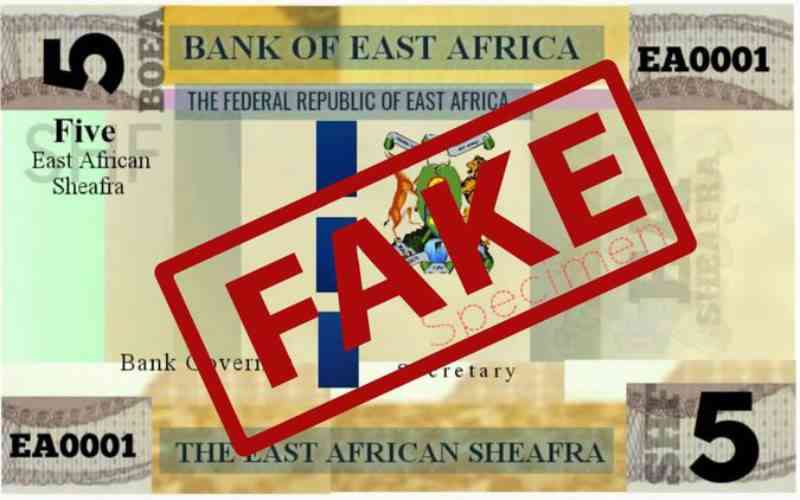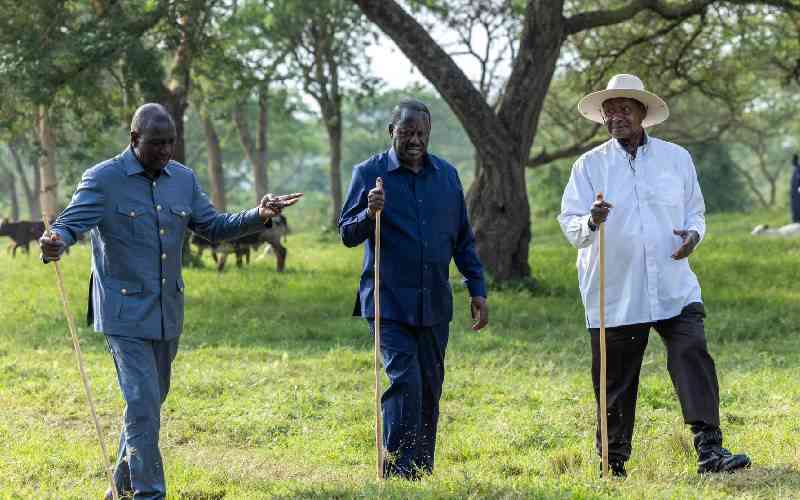
For the first time in 20 years, Kenya’s gross domestic product (GDP) growth has caught up with and surpassed sub-Saharan Africa’s average growth rate.
This is despite the country’s economy continuing to face several storms in the continental, regional and local markets.
As Africa grapples with the impacts of a slowdown in China’s growth, a commodity slump and a strengthening of the US economy, Kenya is one of the few economies in the continent that has survived with little damage.
In fact, the country’s current growth rate has surpassed averages for the East African Community (EAC), according to the latest data from the Kenya National Bureau of Statistics (KNBS).
The relatively good performance of the economy in relation to its peers, and its resilience in the face of significant internal hurdles — such as insecurity and corruption — have cast the country at a leading light of African prospects. Analysts are even painting a picture of an emerging superpower.
Shifting attention
The poor performance of the BRIC (Brazil, Russia, India and China) economies — once considered the countries to take over from the G7 (Canada, France, Germany, UK, Italy, Japan, and the US) — has seen some economists suggest the centre of growth in emerging markets is shifting.
Kenya, which according to KNBS data saw its real GDP growth rate exceed that of the BRICs, has been mentioned several times as one of the new “fast-growing low-income economies”.
According to economist Mauro Guillén, potential new markets are divided into three waves.
The first is made up of Southeast Asian countries — Vietnam, the Philippines and Bangladesh, which stand to pick up some of the business being shed by China’s manufacturing sector.
The second one is made up of sub-Saharan African nations led by Nigeria and Kenya, whose rapid growth, while still underdeveloped, is creating a huge pool of consumers to drive growth.
The third is the ideal embodied by the United Arab Emirates (UAE), where an emerging economy, despite having abundant natural resources, diversifies its economy to avoid falling into the ‘commodity curse’ that makes countries rich sometimes, but can stifle innovation and hard work.
Kenya’s resilience is especially attracting renewed attention as the US economy continues to recover from the crippling 2007-08 financial crisis, which means some of the recession-era policies occasioned by the crisis are starting to run their course.
One of these is quantitative easing (QE), which had led to an influx of foreign direct investment in developing markets over the last eight years, especially among North America’s private conglomerates that looked to frontier economies promising higher margins.
Stay informed. Subscribe to our newsletter
The US Federal Reserve last month increased its interest rate and is expected to undertake at least four more hikes by the end of this year, casting uncertainty on the sustainability of Africa’s new-found cheap capital.
It is this uncertainty that has been at the back of a currency crisis last year.
But while countries in the region saw major drops in their currencies, the Kenyan shilling depreciated by just 12 per cent. The Zambian kwacha, for instance, lost 42 per cent of its value, while the South African rand and Ghanaian cedi dipped by 25 per cent and 16 per cent, respectively.
In East Africa, the Ugandan and Tanzanian shillings weakened by 18 per cent and 20 per cent, respectively.
Policy action
According to Razia Khan, Standard Chartered Bank’s chief economist for Africa, Kenya’s currency was saved from further depreciation by the pre-emptive policy action taken by the Central Bank of Kenya (CBK) borne out of painful lessons learnt in 2011.
“CBK’s Monetary Policy Committee acted pre-emptively when the Kenyan currency depreciated, and that action gained the Central Bank a lot of credibility. They also have the space to cut rates if market conditions demand that in the future,” she said.
Kenya’s Monetary Policy Committee (MPC) last week chose to maintain the base lending rate at 11.5 per cent, and according to analysts’ estimations, this is set to hold before being eased downward in the second half of this year.
In addition to ensuring a stable currency, Kenya’s non-reliance on commodities has managed to save the economy the impact of China’s economic slowdown.
In 1999, China’s trade with Africa accounted for 4 per cent of the value of the continent’s international trade.
By 2013, however, China was Africa’s biggest trading partner, taking up a quarter of the business in the region valued at more than $220 billion (Sh22.6 trillion).
A slowdown in China’s economy has thus led economists to forecast a gloomy future for Africa’s growth prospects, particularly in resource-dependent economies that will be directly hit by the slow uptake in commodities — China’s chief imports from Africa.
Data from Standard Chartered Research indicates that countries like Angola, Congo, Zambia and Mozambique will bear the brunt of the slowdown, as China accounts for between 20 and 45 per cent of their total exports.
China accounts for less than 1 per cent of Kenyan exports, meaning that the impact of reduced trade volumes between the two countries would not have a major impact on overall trade.
Biggest beneficiary
According to Terence McNamee, the deputy director of Johannesburg-based think tank Brenthurst Foundation, immediately after independence, Kenya was a darling of the West owing to its lack of civil strife, political instability and its romanticisation as a tourist heaven.
“Then came the disputed 2007 election,” he said.
“The widespread communal violence which erupted in its aftermath eviscerated the ‘Kenya’ of the West’s popular imagination.”
Dr McNamee further argues that Kenya’s differentiated and dynamic private sector, coupled with its approach to international trade, has elevated the country to the league of what he terms as ‘swing states’ — alongside South Africa and Nigeria.
“Intra-regional trade in the East African Community is higher than in any other region on the continent, and Kenya is the chief beneficiary of this trade,” he said.
Data from the World Bank indicates that Kenya exports as much as 40 per cent of its manufactured products to the EAC (although China and India are steadily eating into this market share).
“Internationally, Kenya has effectively pursued a pragmatic approach, balancing ‘the best from China’ and ‘the best from the US’ for investment and market expansion,” said McNamee.
Further adding weight to the country’s growing power is that it hosted the Global Entrepreneurship Summit and World Trade Organization’s ministerial meeting last year, and will host a UN trade meeting later this year.
But despite these strategic strengths and for all its economic boisterousness, Kenya’s success story remains a distant reality for many of its citizens and small entrepreneurs, as the impact is yet to transmit throughout the economy.
According to Ms Khan, for economies to witness transformative growth, the growth rate needs to be sustained for several years.
“When an economy is subject to a great deal of volatility through, for instance, cyclical droughts, then the impact of its growth becomes difficult to sustain and transmit through the various classes,” she said.
Making Statistics Count
Kenya’s trade balance — its exports minus imports — remains the biggest concern to sustaining the country’s economic growth.
“Any time there is economic expansion in Kenya, we see import growth naturally rising, but we do not see the same kind of growth in export growth. This needs to change for us to see a more stable growth curve and living standards changing over time,” said Khan.
Data from KNBS indicates that in 2005, the value of Kenya’s total imports stood at Sh443 billion. By 2014, this figure had grown about four times to stand at Sh1.6 trillion.
Export numbers have, on the other hand, been less alluring. Within the same period of time, Kenya’s exports have grown from Sh260 billion to Sh537 billion.
This wide trade balance erodes the country’s ability to comfortably off-set its external debt, pushing the economy dangerously close to a vicious cycle where more borrowing is done to settle and refinance debt.
“Kenya has taken on more foreign debt, and this comes from the years of QE when it was cheaper to get external funding,” said Khan.
“However, a small volatility in the exchange rate has a big impact on raising the cost of servicing that debt because the more external debt a country has, the more it needs to show it has the external reserves to cover that comfortably.”
As a starting point, Kenya can start addressing inefficiencies in manufacturing and agricultural sectors that lead to the importation of goods that could very well be found within the country.
KNBS data shows that in 2014, Kenya imported more than Sh106 billion worth of agricultural products, including rice, maize, tea and milk — these can easily be sourced from within the country, saving the country a huge import bill and providing millions of poor farmers with an economic lifeline.
[email protected]
 The Standard Group Plc is a
multi-media organization with investments in media platforms spanning newspaper
print operations, television, radio broadcasting, digital and online services. The
Standard Group is recognized as a leading multi-media house in Kenya with a key
influence in matters of national and international interest.
The Standard Group Plc is a
multi-media organization with investments in media platforms spanning newspaper
print operations, television, radio broadcasting, digital and online services. The
Standard Group is recognized as a leading multi-media house in Kenya with a key
influence in matters of national and international interest.
 The Standard Group Plc is a
multi-media organization with investments in media platforms spanning newspaper
print operations, television, radio broadcasting, digital and online services. The
Standard Group is recognized as a leading multi-media house in Kenya with a key
influence in matters of national and international interest.
The Standard Group Plc is a
multi-media organization with investments in media platforms spanning newspaper
print operations, television, radio broadcasting, digital and online services. The
Standard Group is recognized as a leading multi-media house in Kenya with a key
influence in matters of national and international interest.









